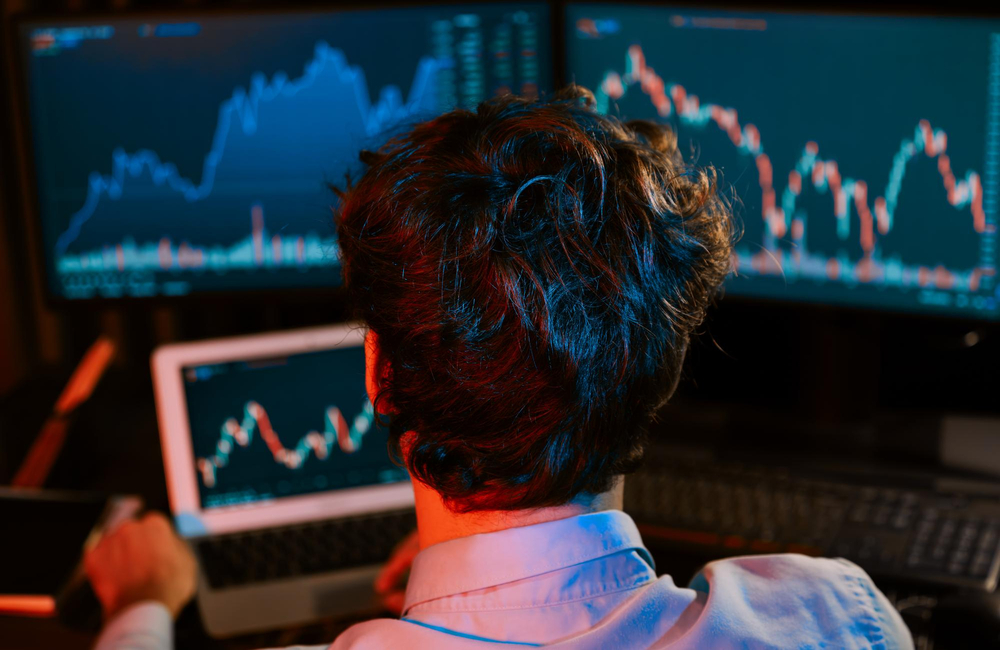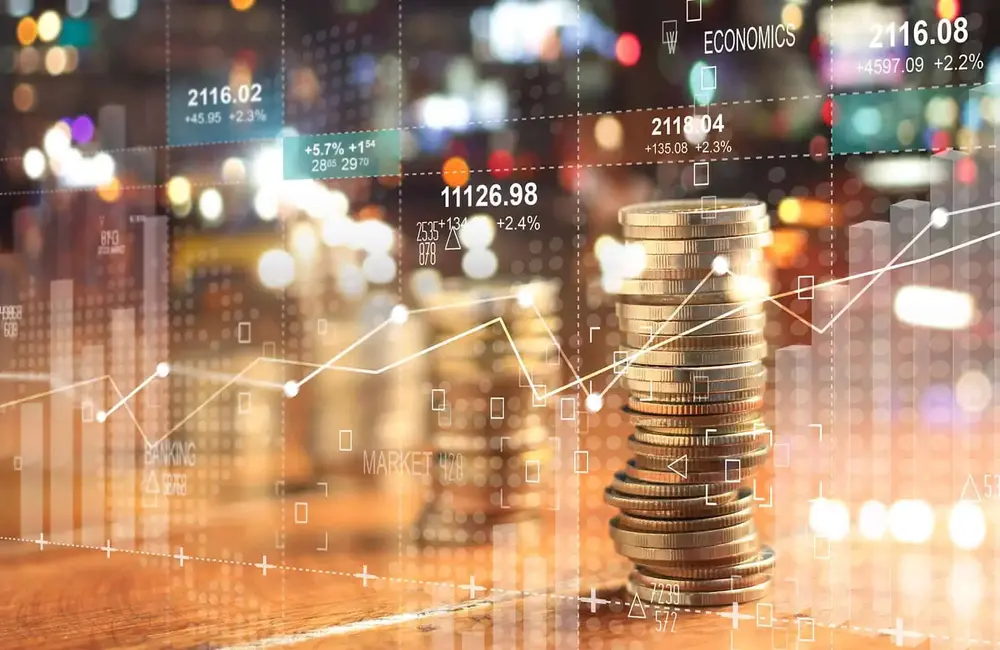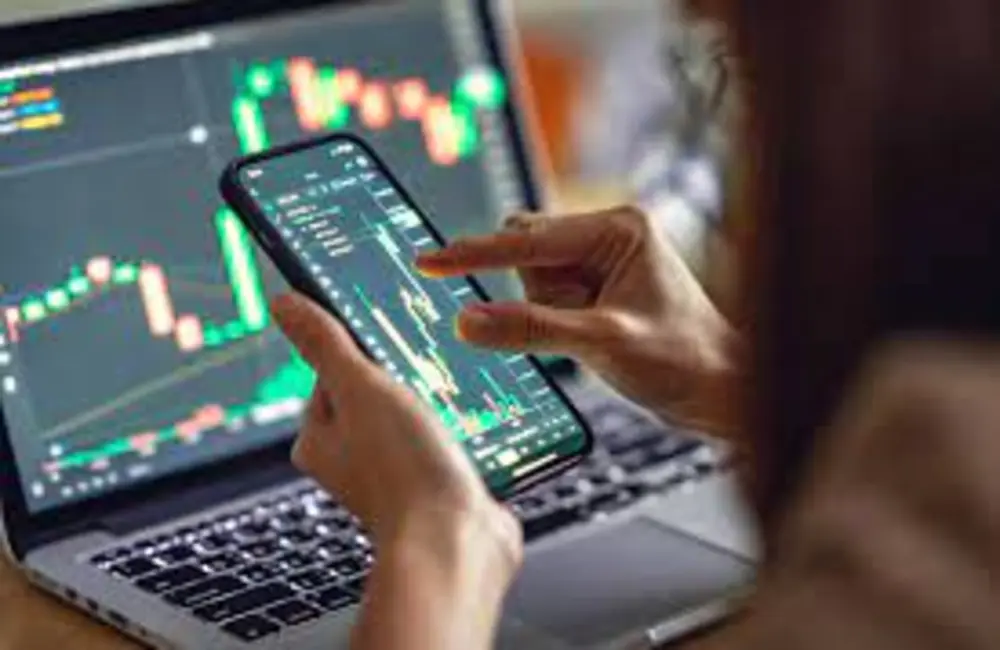ASX futures tumbled 183 points or 2.7% to 6631 at 8:00 am on Tuesday, suggesting a big opening selloff in line with the global equity and bond markets.
One day after new data showed US inflation continued to accelerate in May, investors continued to dump risk. The S&P 500 plunged 3.9 percent, with 495 of its 500 components closing lower on the day. The declines left the US stock benchmark more than 20% below its January record, putting it into a bear market for the first time since 2020. The Dow Jones Industrial Average fell 2.8 percent. The tech-heavy Nasdaq Composite fell 4.7 percent, and was 33 percent below its November peak.
The implied US federal funds rate forecast now sits at 3.6% end-of-year, up from 2.9% priced a week ago. Speculation is mounting that the central bank might deliver an extra large 0.75 percent jump in rates after its meeting at the end of the week (Thursday AEST).
At the same time, a rout among cryptocurrencies showed investors’ growing reluctance to hold on to their most speculative positions. The price of bitcoin dropped below $23,000 and then cut into that loss to trade at 5 pm New York time down 66% from its November peak.
“We’re definitely seeing a risk-off environment, a flight to quality,” said Charlie Ripley, senior investment strategist at Allianz Investment Management. “It’s going to be a cash-raising environment there.”
Locally, the S&P/ASX 200 finished 1.25% in the red at 6932.0 on Friday, its heaviest weekly loss since April 2020 as global inflation fears grew.
All 11 sectors of the benchmark index declined as it tracked a negative lead from US equity markets, which sank lower after the European Central Bank laid out a roadmap to hike interest rates in July.
The property-trusts sector was the biggest loser, dropping 2.9% on concerns about the effects of rising rates on real-estate markets. The banks NAB, ANZ, Commonwealth, and Westpac shed between 0.7% and 1.5%. Travel and retail stocks fell, while the energy sector, which has surged recently on rising wholesale prices, lost 1.6%. The ASX 200 fell 4.2% this week.
Brent crude oil in commodity markets increased 0.15% to US$122.19 a barrel. Iron ore lost 3.5% to US$136.60. Gold fell 2.3% to US$1831.80.
In local bonds on Friday Australian 2 Year government bond yields popped to 2.71% and the 10 Year jumped to 3.83%. US bond markets fell sharply as traders ramped up bets of how much the Federal Reserve will raise rates. The yield on 2 year Treasury notes, which are most sensitive to shifts in interest rates, jumped to 3.35% while the yield on the 10 year US Treasury notes climbed to 3.36%.
The Australian dollar plunged to 69.24 US cents from 70.49 US cents previously. The Wall Street Journal Dollar Index, which measures the US dollar against 16 other currencies, climbed to 97.64 on risk-off sentiment.
Asia
Chinese stocks were mixed, with gains among auto companies offset by losses among property developers. Supportive government policies are bolstering demand in the auto industry, while a sales recovery in 2H could lift the sector's share prices, according to a note from Guotai Junan Securities. Great Wall Motor rose 5.3%, Guangzhou Auto added 3.9% and Chongqing Changan Auto surged 8.9%. At the other end of the scale, Poly Developments & Holdings Group lost 4.5% after its contracted sales for May fell 36%, and Gemdale Corp slipped 4.2%. Wuxi AppTec slipped 9.6% after news its controlling shareholder intends to cut its stake. The Shanghai Composite Index lost 0.9% to 3255.55, the Shenzhen Composite Index was flat, and the ChiNext Price Index was down 0.4%.
Hong Kong shares closed sharply lower and Asian equities largely tracked lower. The regional weakness followed a sell-down on Wall Street the previous Friday, when stronger-than-expected May consumer-price data from the US led investors to reassess the aggressiveness of Wall Street’s expectations for how quickly the Federal Reserve will be forced to ratchet up interest rates to tackle inflation. The Hang Seng Index benchmark slid 3.4% to close at 21067.58. Tech stocks, whose valuations tend to especially struggle in a world of higher interest rates, led the way lower. Alibaba plummeted 8.0% while Meituan tumbled 6.5%.
Japan’s Nikkei Stock Average fell 3.0% to settle at 26987.44 on concerns over more aggressive Fed tightening. US CPI numbers last Friday dashed hopes inflation was in an upturn of some sort and revived hawkish expectation the Fed should step on the gas if it really wanted to wrest control of inflation, Swissquote Bank senior analyst Ipek Ozkardeskaya said in an email. Declines on the Nikkei were broad-based with SMC Corp. sinking 7.2%, SoftBank Group down 6.85%, and M3 Inc. off 6.75%.
Europe
European equities plunged in a global selloff as persistent inflation in the US renewed concern that the Federal Reserve will lift interest rates higher than anticipated to rein in rising prices. Investors are also wrestling with what will likely be the first European Central Bank rate increase in more than a decade by July.
London’s FTSE 100 fell 1.53% on Monday after the U.K. GDP shrank for a second straight month. Investors are also on the lookout for policy decisions from the Federal Reserve and the Bank of England later in the week regarding interest rates. Data Friday showed US inflation higher than expected and led to speculation the Fed could ease interest rates by 75 basis points, more than the 50 bp previously anticipated, at Wednesday’s meeting, CMC Markets analyst Michael Hewson says in a note.
North America
The selloff in stocks grew worse on Monday, with the S&P 500 entering a bear market, as investors took a fresh look at Friday’s sizzling inflation data and found themselves even less happy about what they saw.
With the prospects for aggressive Fed monetary tightening rising, investors sold risk broadly. The S&P 500 tumbled 3.9 percent, with 495 of its 500 members closing lower for the day. The declines left the US stock benchmark over 20 percent below its January record, plunging it into a bear market for the first time since 2020. The Dow Jones Industrial Average fell 2.8%. The tech-heavy Nasdaq Composite fell 4.7 percent, down 33 percent from its peak in November.
Separately, a rout in cryptocurrencies underscored investors’ growing reluctance to hold onto their most speculative holdings. Bitcoin’s price sank to below $23,000 before making up some of that loss, and was trading at 5 p.m. New York time, down 66 percent from its peak last November.
Cryptocurrencies’ decline picked up speed Monday as interest-rate jitters ignited a weekend selloff. The largest cryptocurrency, Bitcoin, was at $23,250.72 around 5 p.m. New York time, a 15 percent drop from 24 hours earlier. Ethereum was 16% lower from 24 hours earlier at around $1,243. Coinbase Global shares declined 11 percent and Celsius Network said it was suspending all withdrawals, swaps between cryptocurrencies and transfers between accounts, citing “extreme market conditions.”
Even infrequent bets that had paid off in 2022 faltered on Monday. The energy sector, the only one of the 11 within the S&P 500 to be in positive territory this year, slid 5.1%, a sharper drop than that of the broad index. The utilities group, which was the second best performer in 2022, also lagged the market with a decline of 4.6% on the day.
“We’re very much seeing a risk-off tone, flight to quality here,” said Charlie Ripley, senior investment strategist at Allianz Investment Management. “They need to raise cash in that environment.”
Markets have been jostled wildly this year as investors rush to make sense of how quickly the central bank will hike interest rates in a bid to control sky-high inflation. Rock-bottom rates and other stimulative policies helped buoy the economy and, by extension, markets as the onset of the Covid-19 pandemic shut down businesses and left people without work.
Now the Fed is seeking to rein in soaring prices by unwinding that easy-money policy. The Fed will kick off its newest two-day policy meeting Tuesday, and most investors expect it to announce Wednesday that it’s raising its benchmark interest rate by half a percentage point.
But expectations that the Fed will need to act even more forcefully this year have mounted since Friday’s inflation report, which revealed that US consumer prices jumped 8.6 percent, year-on-year, in May, the fastest such increase since 1981. The report rattled markets and heightened fears that the campaign of monetary tightening could push the economy into recession.
“The bottom line is if inflation’s going higher, the Fed has no choice but to raise rates,” said Chris Zaccarelli, chief investment officer at Independent Advisor Alliance. “The more the Federal Reserve has to raise interest rates, the longer they have to keep raising interest rates, the more likely it is we’re going into recession.”
On Monday, futures bets indicated traders were ascribing a roughly 85% chance that the Fed will lift its benchmark short-term interest rate by at least 2.5 percentage points this year, from the current range of 0.75% to 1%, by the end of the year, according to CME Group. That would add up to at least a half-percentage-point rate hike at every Fed meeting this year. Traders on Friday assigned a 50% probability of that, CME Group said.
“It feels like inflation is here for longer than expected,” said Kiran Ganesh, a multi asset strategist at UBS. “People are starting to get concerned now that the Fed is going to have to go more or faster with the interest rate.”
Government bond yields soared Monday as investors worried that persistent inflation could cause the Fed to hike rates higher and faster than previously expected. The yield on the benchmark 10-year US Treasury note climbed to 3.371% on Monday, its highest closing level since 2011, from 3.156% on Friday. That was its biggest one-day yield gain since March 2020.
US tech stocks, which climbed the entire time of the pandemic, posted large drops. Shares of Apple dropped 3.8% and Amazon.com shares lost 5.5%. Chip maker Nvidia fell 7.8% while Tesla lost 7.1%. Meta Platforms, the parent of Facebook, declined 6.4%.
“This is a bear market, by definition, where fear is setting in, fear is in place, fear is pushing people out of the market, fear is making people clean out portfolios, fear is making people capitulate,” said Todd Morgan, the chairman of Bel Air Investment Advisors in Los Angeles.
Nonetheless, Mr. Morgan added that there would be developments in the coming month or two that could help reduce inflationary pressures, such as lower gasoline demand after the summer and a slowing demand for houses caused by rising mortgage rates.
“This is a brave new world we’re in right now. I don’t know that anybody can tell you what inflation will be like a year from now,” Morgan Stanley CEO James Gorman said at a conference Monday.
“China opening up is a big deal, too,” he said, since that would alleviate supply-chain constraints. Figures last week indicated that Chinese exports to the rest of the world jumped in May as Covid-19 restrictions were rolled back, adding to evidence of an economic rebound there.

























